236 start with D start with D












Dumbarton Oaks Papers is an annual journal of scholarly articles on Byzantine topics. Many of the articles are based upon presentations made at the Byzantine conferences hosted by Dumbarton Oaks. Numerous maps, tables, illustrations, and color plates provide supplementary information.
Dumbarton Oaks Papers 59 includes papers from a colloquium on Byzantine glass, guest edited by David Whitehouse of the Corning Museum of Glass. Other articles feature a discussion of zodiac cycles in ancient Palestinian synagogues, a study of early Christians' responses to the spectacles of fifth-century Carthage, and an analysis of scientific and literary sources pertaining to the mysterious cloud that darkened the sky for about a year in 536, to determine what, if any, immediate effects it had. A fieldwork report on the ongoing excavations at the Amorium project is also featured.

Volume 60 of this annual journal explores a range of Byzantine subjects: the classification of stamping objects (including six previously unpublished metal stamps); the date and purpose of the construction of Constantinople’s church of Saints Sergius and Bacchus; the Coptic Church’s literary construction of its identity in post-conquest Egypt; the evidence for the tenth-century revision of the so-called Chronicle of 811; an unusual development in the iconography of St. Menas; and versions of Niketas Choniates’ History.
Also included are editions and translations of Byzantine Communion prayers newly discovered in Massachusetts and two funerary epigrams written by Manuel Philes; both articles include commentary. The volume concludes with reports from 2003 and 2004 on Dumbarton Oaks–supported archaeological fieldwork projects on a church in Bizye and an aristocratic rock-cut Byzantine settlement in Cappadocia.

This latest volume of Dumbarton Oaks Papers focuses in part on literary and historical texts: historicism in Byzantine thought and literature; the Chronicle of Matthew of Edessa, encompassing the First Crusade and the Armenian diaspora; and a reappraisal of the satirical prose work Mazaris’s Journey to Hades. The history and architecture of the Cypriot Monastery of Saint John Chrysostomos at Koutsovendis occupy a lengthy and informative chapter, which also includes a first edition of the “Letter of Nikon of the Black Mountain to the Founder George.”
The volume also contains selected papers from the 2005 Dumbarton Oaks symposium on the archaeological evidence for settlement patterns in Anatolia and the Levant between 500 and 1000.

This volume begins with a substantial investigation of the murder of several members of the imperial family during the summer of 337, following the death of Constantine. Two other major articles are devoted to well-known Byzantine illustrated manuscripts, the ninth-century Sacra Parallela and the fourteenth-century collection of theological works by the emperor John VI Kantakouzenos, both now in Paris. A third art-historical paper presents a detailed analysis of the architectural decoration of the church of the “Red Monastery” near Suhag in Egypt. Other studies treat the mystery of the Incarnation as well as the earliest version of the Life of the Virgin and its relationship with the cult of Marian relics in Constantinople.
The volume concludes with three papers from a colloquium on the hymnographer Romanos the Melode.

Founded in 1941, the annual journal Dumbarton Oaks Papers is dedicated to the publication of articles relating to late antique, early medieval, and Byzantine civilization in the fields of art and architecture, history, archaeology, literature, theology, law, and auxiliary disciplines.
In this issue: Alexander Sarantis, “War and Diplomacy in Pannonia and the Northwest Balkans during the Reign of Justinian: The Gepid Threat and Imperial Responses”; Peter Hatlie, “Images of Motherhood and Self in Byzantine Literature”; Maria Evangelatou, “Liturgy and the Illustration of the Ninth-Century Marginal Psalters”; Henry Maguire, “Ivories as Pilgrimage Art: A New Frame for the ‘Frame Group’”; Vasileios Marinis, “Tombs and Burials in the Monastery tou Libos in Constantinople”; and three fieldwork reports: “Second Report on the Excavation in the Monastery of Apa Shenute (Dayr Anba Shinuda) at Suhag,” by Peter Grossman, Darlene L. Brooks Hedstrom, and Saad Mohamad Mohamad Osman, with a contribution by Hans-Christoph Noeske; “To Live and Die in a Turbulent Era: Bioarchaeological Analysis of the Early Byzantine (6th–7th Centuries AD) Population from Sourtara Galaniou Kozanis (Northern Greece),” by Chryssi Bourbou; and “Study and Restoration of the Zeyrek Camii in Istanbul: Second Report, 2001–2005,” by Robert Ousterhout, Zeynep Ahunbay, and Metin Ahunbay.


Founded in 1941, the annual journal Dumbarton Oaks Papers is dedicated to the publication of articles relating to late antique, early medieval, and Byzantine civilization in the fields of art and architecture, history, archaeology, literature, theology, law, and auxiliary disciplines.
This issue includes “The Canon Tables of the Psalms: An Unknown Work of Eusebius of Caesarea” by Martin Wallraff; “Histoires ‘Gothiques’ à Byzance: Le Saint, Le Soldat, et Le Miracle d’Euphémie et du Goth (BHG 739)” by Charis Messis and Stratis Papaioannou; “Reassessing the Sarcophagi of Ravenna” by Edward M. Schoolman; “Sources for the Study of Liturgy in Post-Byzantine Jerusalem (638–1187 CE)” by Daniel Galadza; “(Re)Mapping Medieval Antioch: Urban Transformations from the Early Islamic to the Middle Byzantine Periods” by A. Asa Eger; “Melkites and Icon Worship during the Iconoclastic Period” by Juan Signes Codoñer; “The Anzas Family: Members of the Byzantine Civil Establishment in the Eleventh, Twelfth, and Thirteenth Centuries” by John Nesbitt and Werner Seibt; “Viewing and Description in Hysmine and Hysminias: The Fresco of the Virtues” by Paroma Chatterjee; “The Documents of Dominicus Grimani, Notary in Candia (1356–1357)” by Nicky Tsougarakis; and “The Church of Saints Sergius and Bacchus in Kaftūn (Northern Lebanon) and Its Wall Paintings” by Tomasz Waliszewski, Krzysztof Chmielewski, Mat Immerzeel, and Nada Hélou.




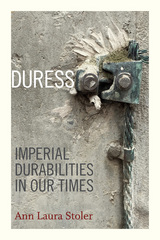
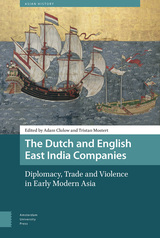
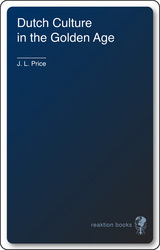
The seventeenth century is considered the Dutch Golden Age, a time when the Dutch were at the forefront of social change, economics, the sciences, and art. In Dutch Culture in the Golden Age, eminent historian J. L. Price goes beyond the standard descriptions of the cultural achievements of the Dutch during this time by placing these many achievements within their social context. Price’s central argument is that alongside the innovative tendencies in Dutch society and culture there were powerful conservative and reactionary forces at work—and that it was the tension between these contradictory impulses that gave the period its unique and powerful dynamic.
Dutch Culture in the Golden Age is distinctive in its broad scope, examing art, literature, religion, political ideology, theology, and scientific and intellectual trends, while also attending to the high and popular culture of the times. Price’s new interpretation of Dutch history places an emphasis on the paradox of the Dutch resistance to change as well as their general acceptance of innovation.
This comprehensive look at the Dutch Golden Age provides a fascinating new way to understand Dutch culture at the height of its historic and global influence.

In 1988–1989 the three hundredth anniversary of an important historical event, the ascension of William and Mary to the thrones of England and Scotland, was celebrated in the Netherlands, the United Kingdom, and the United States of America. The symposium on Dutch garden art held at Dumbarton Oaks in May 1988 was the only scholarly event during the anniversary year that focused wholly upon gardens.
This wide-ranging collection of essays charts the history, scope, and spread of Dutch garden art during the seventeenth century. A group of scholars, mostly Dutch, surveys what has been called the “golden age” of Dutch garden design. Essays discuss the political context of William’s building and gardening activities at his palace of Het Loo in the Netherlands; the development of a distinctively Dutch garden art during the seventeenth century; country house poetry; and specific estates and their gardens, such as those of Johan Maurits van Nassau-Siegen at Cleves or Sorgvliet, the estate of Hans Willem Bentinck, later the Earl of Portland. Other contributions concern typical Dutch planting and layouts, with a focus upon Jan van der Green’s much-circulated Den Nederlandtsen Hovenier; the designs of Daniel Marot, the Huguenot refugee from France, who worked for William III in both the Netherlands and England; and the attitudes of the English toward Dutch gardening as it was observed in practice and mythologized through the distorting lens of national cooperation and rivalries.
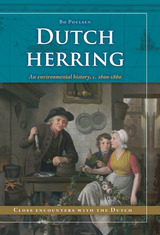
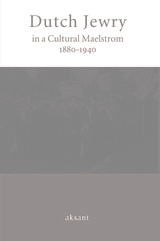
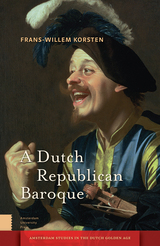

During the closing years of the sixteenth century, the Dutch East India Company fast became a political and economic force in Asia, en route to becoming the leading private company in the world by 1660. This definitive volume explores perhaps the most important tool in the company’s trade: its ships. Robert Parthesius here reconstructs the complete shipping activities of the Company through a unique database that charts the movements of even previously ignored smaller vessels. Demonstrating that the wide range of types and sizes of vessels were indeed what gave the Company the ability to sail—and to continue its profitable trade—year after year, Dutch Ships in Tropical Waters combines the best of maritime history and archaeological research in order to change our understanding of the logistical dynamics behind one of the most important and successful businesses of this period.

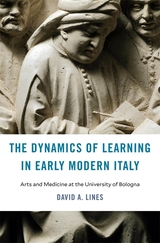
A pathbreaking history of early modern education argues that Europe’s oldest university, often seen as a bastion of traditionalism, was in fact a vibrant site of intellectual innovation and cultural exchange.
The University of Bologna was among the premier universities in medieval Europe and an international magnet for students of law. However, a long-standing historiographical tradition holds that Bologna—and Italian university education more broadly—foundered in the early modern period. On this view, Bologna’s curriculum ossified and its prestige crumbled, due at least in part to political and religious pressure from Rome. Meanwhile, new ways of thinking flourished instead in humanist academies, scientific societies, and northern European universities.
David Lines offers a powerful counternarrative. While Bologna did decline as a center for the study of law, he argues, the arts and medicine at the university rose to new heights from 1400 to 1750. Archival records show that the curriculum underwent constant revision to incorporate contemporary research and theories, developed by the likes of René Descartes and Isaac Newton. From the humanities to philosophy, astronomy, mathematics, and medicine, teaching became more systematic and less tied to canonical texts and authors. Theology, meanwhile, achieved increasing prominence across the university. Although this religious turn reflected the priorities and values of the Catholic Reformation, it did not halt the creation of new scientific chairs or the discussion of new theories and discoveries. To the contrary, science and theology formed a new alliance at Bologna.
The University of Bologna remained a lively hub of cultural exchange in the early modern period, animated by connections not only to local colleges, academies, and libraries, but also to scholars, institutions, and ideas throughout Europe.
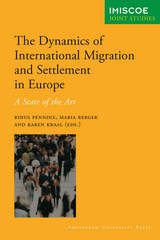
The Dynamics of Migration and Settlement in Europe explores the causes and consequences of such massive changes in demography. Researchers at the IMISCOE–Network of Excellence (Immigration, Integration and Social Cohesion in Europe) bring together a wealth of theoretical and analytical research in this collection of essays addressing the many crucial questions that have arisen in the past two decades. Underlying these essays is a key concern for the healthy management of these new migration processes, as well as the eventual shape of the new societies that are just beginning to emerge.
International migration and the ensuing questions about integration continue to be subjects of intense debate, and this book will be welcomed among those involved in migration studies and international development.

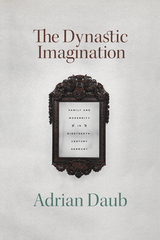
Daub builds this conception of dynasty in a syncretic study of literature, sciences, and the history of ideas, engaging with remnants of dynastic ideology in the work of Richard Wagner, Émile Zola, and Stefan George, and in the work of early feminists and pioneering psychoanalysts. At every stage of cultural progression, Daub reveals how the relation of dynastic to nuclear families inflected modern intellectual history.
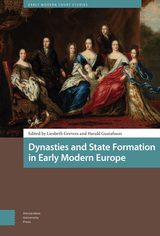
READERS
Browse our collection.
PUBLISHERS
See BiblioVault's publisher services.
STUDENT SERVICES
Files for college accessibility offices.
UChicago Accessibility Resources
home | accessibility | search | about | contact us
BiblioVault ® 2001 - 2024
The University of Chicago Press









